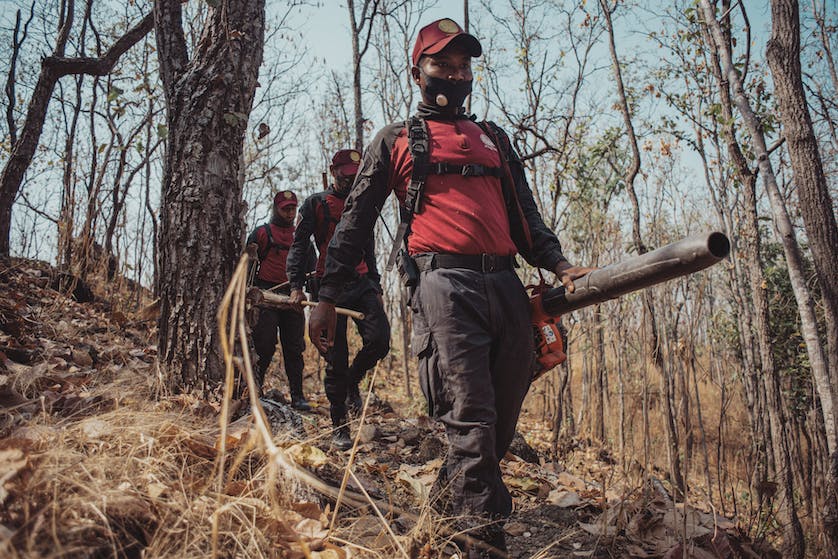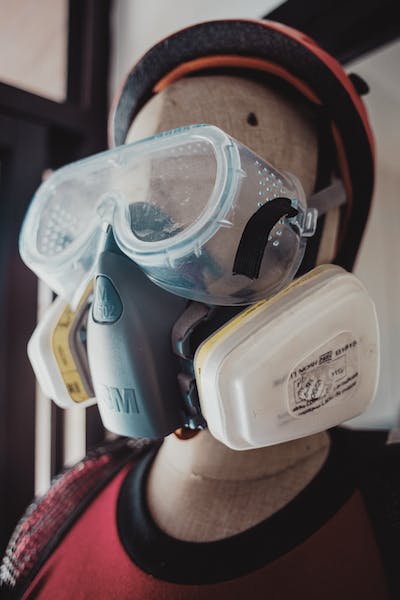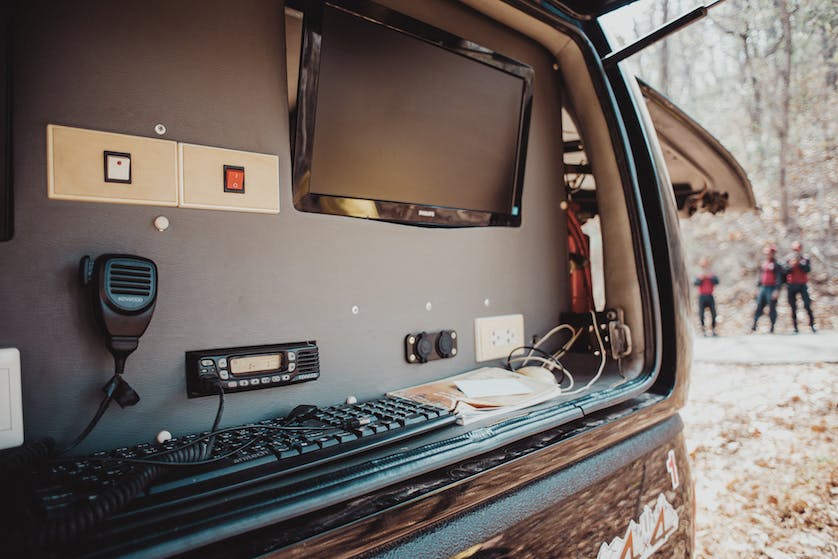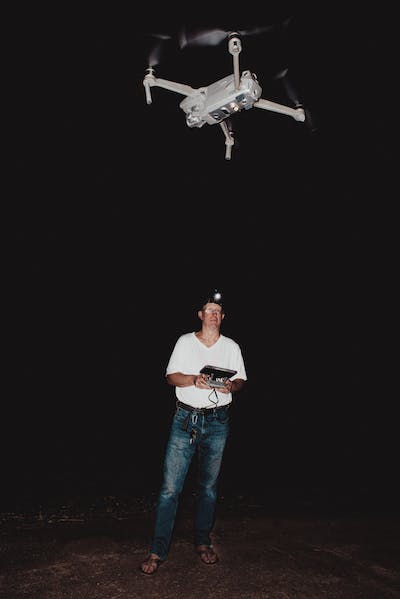
It’s March of 2021 and the hell that is Thailand’s mountainous north is here. The slumbering monster in the mountains has once again awakened, spewing its flames and smoke into our air. Each year, for months, agitation and discomfort accompany the haze as thousands seek medical help for various effects of the air pollution from milder irritants to respiratory issues. Air purifiers and masks become vital throughout the burning months as people try to protect themselves as best they can from the yellowish-brown noxious pollution.
In order to gain a better understanding of the causes of the annual inferno that overtakes northern Thailand I went to the frontlines of the fires and travelled to the ‘horse carriage city’ of Lampang to meet up with Peter Ferdinand. He and his Thai wife, Nittaya Charee, own and operate a successful small food business just outside the city of Lampang. Their ranch of a few staff members, six dogs, six puppies and somewhere between 20 and 30 chickens sells sausages, mashed potatoes and condiments like jam and mustard to hotels all across Thailand. Peter is a thoughtful and soft spoken man, a man of many skills, but now that the season is upon us, he has put on his metaphorical, and literal, fireman’s hat. Fighting fires is serious business.

“Firefighting is a way to pay something back to Thailand,” Peter said about his volunteer work, “Nittaya and I have travelled extensively throughout Thailand. We’ve been to so many places and King Bhumibol Adulyadej has been there in the past to benefit the communities and I thought he seemed like a great leader. So, I thought, maybe I could give something back like that, too.” Peter and Nittaya are members of the We Love the King Lampang Group, a group that focuses on preserving the forests of Thailand. There are over 130 members in the Lampang group and Peter and Nittaya joined shortly after moving to Thailand in 2014; the couple’s firefighting and forest preservation work with the group having sparked the attention of the national press in recent years.
I arrived on my bike late Friday night and stayed in one of Peter’s guest houses that he generously offered up for my visit.
On Saturday morning we started work early; hunting fires takes a lot of energy. After Peter and I munched on a big breakfast, we loaded our firefighter gear and camera equipment into his SUV, driving 30 minutes to meet a firefighter unit in Lampang known as The Firehawks for an update. “The Firehawks is a special force in Thailand that goes anywhere action is needed,” explained Firehawk Chief Sataporn Buunpong as we pulled up to the small fire house. “The Firehawks started five years ago with 164 well trained fighters across Thailand, over 60 in Lampang alone.” Chief Sataporn explained that their work was very difficult and demanding. “In fire season we go out at least two to three times a day, sometimes we fight fires for three hours, get back to the station then get called back into the forest.”

The Firehawks were dressed in sharp looking red uniforms and sported baseball caps and military boots. The team of 20 or so (most of them young and fit men) were debriefed on their daily firefighting duties before climbing into trucks and motorbikes to head out for the day’s fire mission. Peter explained that the Firehawks were heading to assess a recent fire in the hills which had yet to be officially reported. So, I jumped in the back of a truck with two Firehawks, Peter and Nittaya following closely behind in their SUV.
Our caravan wended our way along dirt roads, enveloped in billowing dust, as we cleaved our way past charred grass flanking both sides of the road, a reminder of fires’ recent wakes.
As we arrived at a remote trailhead, the Firehawks leapt into action, unloading their vehicles, putting on their gear and setting up their walkie-talkies – communication being crucial and a matter of life and death. For added safety, a control-unit back at the fire station could observe the team via a GPS tracker and there was a mobile command vehicle equipped with a radio antenna and TV monitors stationed at the trailhead to help maintain a line of contact with the team.

As we entered the forest, evidence of recent fire surrounded us; blackened tree trunks and sizzled sticks lay on the desolate forest floor. The team marched in line as we climbed over logs and ducked under blackened obstacles while periodically checking their walkie-talkies. The Thai mid-morning heat created another challenge to the exhausting hike.
The Firehawks sucked on Camelbacks as we arrived at the barren destination as the team spread out and went to work assessing the damage, almost like members of a crime-scene-investigation unit. They peeked into tree trucks, sifted burned leaves and took photographs. After the team gathered a satisfactory amount of data, they headed back to the trailhead.
Once back at the vehicle, Peter produced a cooler box from his trunk filled with ice-cold Sponsor drinks which were greedily guzzled down by all. “We do what we can,” said Peter of his and Nittaya’s donations of drinks and snacks, when they can.
Back at the fire station I sat down with Chief Sataporn and Peter to get more information on the fires, with Nittaya kindly translating. “For sure the fires are manmade, “he said. “There are a couple of reasons people start fires: Hunters or foragers who make their living in the forests, as well as those who live in the forest villages. Some villagers may start fires to give the other villages a difficult time.” When asked about repercussions, Chief Sataporn said, “If people are caught lighting the fire then there will be serious action. We have never caught people actually lighting fires but we have caught people entering the forest to hunt illegally. This year we found people in the forest with rifles when it was prohibited to hunt.”
“It will get worse,” predicted the chief. “Not just in the north but in other parts of the country, too. Growing agriculture and droughts are getting more serious every year. We have to work harder to change people’s lifestyles and teach people not to burn. Burning should not be an acceptable thing to do. We need to find the people who are burning and teach them. We should support them and give the people alternatives to burning.”

After saying our goodbyes, Peter, Nittaya and I headed out to meet some local volunteer firefighters who accompany Peter on his day firefighting adventures. Pi Chusart and Khun Ra are two of just a few volunteers in Lampang. “There are a surprising number of locals that want to help out but I think that a lot of volunteers are cautious. If you stick your head up to be visible, people will take action to silence you. No one wants to stick their head up and get cut down.” Just as the men entered the car, Nittaya’s phone rang.
“It’s a difficult painful job that you do day after day
because you know it’s the right thing to do”
Nittaya talked excitedly in Thai as Peter and I waited for her to finish. When we learned that the couple’s next door neighbour’s property was catching fire, Peter readjusted course and promptly headed home. As we neared their neighbour Kai’s property a sweet woody fragrance filled the SVU, as Peter explained that this was not an uncommon occurrence. The closer we got, however, the smell became harsher.
Kai’s fruit farm was catching fire. Fast. Her neighbouring property which bordered her land was almost completely charred and flames were flickering and spreading across her land. Living alone, Kai was desperate and the slow local firefighting services had yet to respond.
As we exited the SUV just off Kai’s property, Peter and the volunteers prepared their firefighting gear in silent unison as plumes of smoke spewed from the farmlands. The air became difficult to breathe and Peter motioned for everyone to put on their masks.

Masks in place and leaf blowers in hand, the three firefighters jogged toward the smoky clouds, spreading out and working to create fire breaks. The flames were licking hot and I could barely breathe as I snapped photographs and surveyed the land. My feet were cooking inside my Converse sneakers as I walked over the freshly burned field, it was nearly intolerable. It took about half an hour to tame the fire, by which time the local fire truck arrived and helped douse the remaining embers, before zooming away down the dusty road to put out the next fire.
We were all given bananas by the grateful neighbour and wolfed them down before taking off to drop the volunteers back home.
I was shocked to learn that Peter’s work for the day was far from done. Our next mission: drone work.
Peter is a clever chap. He doesn’t just fight fires; he also locates them. Using a NASA website that reports hotspot GPS coordinates, Peter enters those GPS coordinates into Google Maps before driving out to the hotspot location to capture drone footage. To demonstrate, he showed me a hotspot 20 minutes away. With a few taps on his phone, and a quick drive, we were soon arriving to another cloud of smoke. Within minutes he had his drone flying high and capturing footage of the fire, posting the GPS location on a Facebook page. Because the fire was on private property, we unfortunately had to let it burn.
“I don’t feel optimistic as long as the government continues its current approach”
Done for the day, we headed home for dinner where Peter told me, “My biggest concern as a volunteer firefighter is the attitude of certain corrupt government officials who have expressed their desire to do us harm. The biggest risk to me is that I’m going to get shot in the forest by somebody who wants to stop me from highlighting the fact that these fires are a risk. I’m not worried about getting caught in the fire, I’m worried about getting stopped by corrupt officials.”
As Peter and I sat at his dinner table sipping his favourite cold drink, Cocacola, he continued, “Essentially, people are destroying our reputation in the community, and people don’t seem to trust us as much. They think we have evil intentions. We’ve been told outright that there are certain groups that are prepared to kill us if we venture into certain areas to fight fires. People have told us they would capture or do us harm in the forest. I interpret ‘do us harm’ to mean ‘kill us’”.

There are people in the Lampang community who have accused Peter and Nittaya of lighting the fires themselves. “The fire situation has been getting progressively worse so there’s no reason for me to go light fires,” he said tiredly. “What’s the incentive for me to light fires? They say I’m doing it for the glory. It’s not that glorious when you’ve spent several hours climbing through the forests, tripping over, getting cuts and scratches and bruises, getting dehydrated to the point where you have trouble standing up, staggering out of the forest only to go repeat the process the next day because someone has started a fire again. It’s not a glorious job. It’s a difficult painful job that you do day after day because you know it’s the right thing to do. But there are other people who think doing the right thing is to burn down and destroy every single piece of forest they can see. And I wonder, what sort of future are these people creating for their children and their grandchildren? The place will turn into a dust bowl similar to the Sahara Desert.”

And with that Peter took his German shepherd Gold for a walk around the neighbourhood…as if he hadn’t walked enough already that day. I headed to my guesthouse for a short rest. But as Peter walked back with Gold, he asked me, “Are you ready to go out for some nighttime fire hunting or are you too tired?” I gathered my strength, nodded and smiled as we once again began loading his SUV with gear.
It was then that I knew that Peter’s so-called part-time firefighting work was a full-time (unpaid) job. As he punched a few GPS coordinates into Google Maps, we rode off into the smoky Lampang night for more fire hunting.
www.willlangston.com





